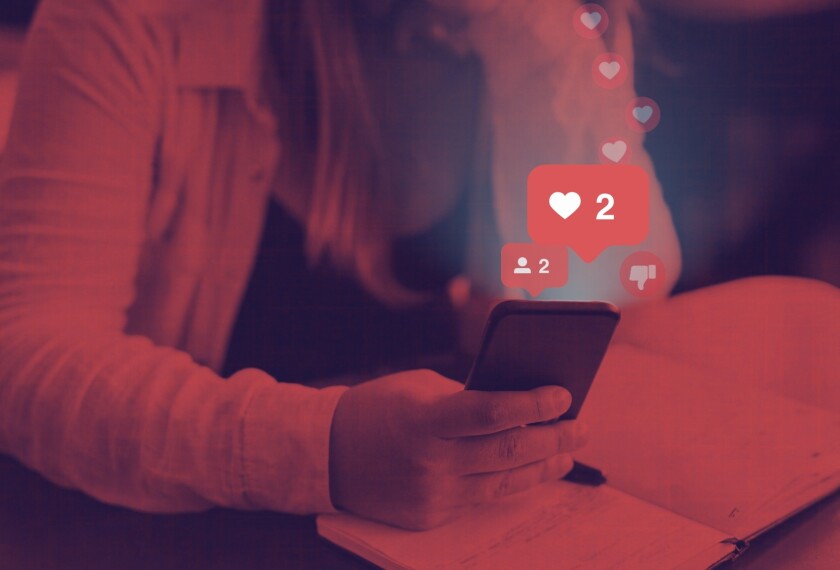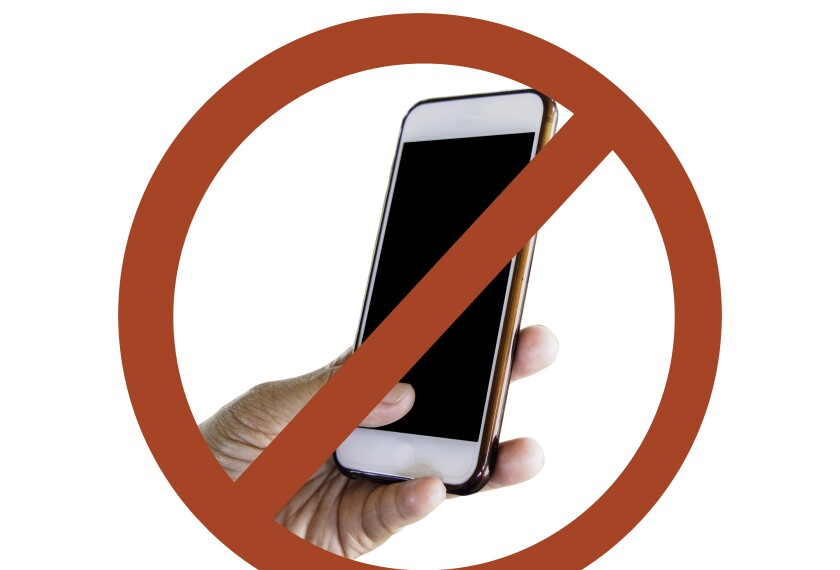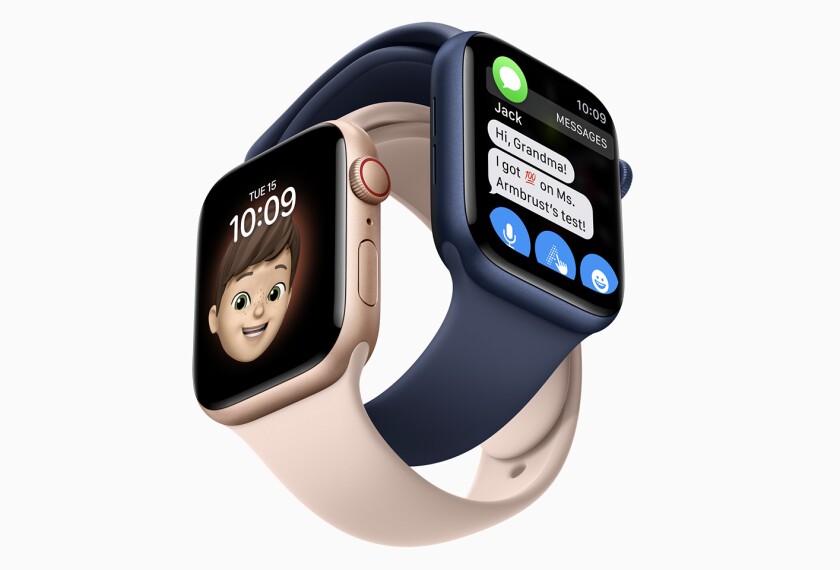The nation’s largest school district is poised to ban students’ cellphone use during the school day a few months into the 2024-25 school year, providing a major boost to a national movement to keep students away from their smartphones so they can focus on learning and in-person interactions with classmates and teachers.
Next week, New York City public schools Chancellor David Banks and Mayor Eric Adams plan to announce their initiative to cut down on cellphone use in the district of more than 900,000 students.
“I can’t stop the kids from having phones, and I want them to certainly be in communication with their parents and families when school is over or even on their way to school,” Banks said in a June 27 interview with Education Week. “But during the school day, I see no good reason for the kids to have access to their phones.”
Banks and Adams have not released the details of their plan, but the chancellor told Education Week that the policy would likely involve taking phones from students in some fashion before they enter the school building. That way, he said, enforcement doesn’t fall to teachers.
With New York City’s schools under mayoral control, the policy can take effect without local board approval.
New York’s plan follows widespread calls to cut down on social media and smartphone use among young people as concerns over their worsening mental health rise. New York Gov. Kathy Hochul, a Democrat, has said that she plans to introduce a bill that would ban smartphones in schools statewide.
Last week, the Los Angeles Unified district, the second largest in the country, voted to bar students from using smartphones at school, starting in January. That measure has the support of California Gov. Gavin Newsom, a Democrat who has called for statewide restrictions on cellphone use.
Florida and Indiana already have laws banning cellphones from classrooms, and Ohio passed a law earlier this year requiring districts to develop policies that would limit student cellphone use. In a recent New York Times opinion piece, U.S. Surgeon General Vivek Murthy called on Congress to require a warning label on social media platforms. Last year, Murthy issued an advisory warning of the harmful effects social media can have on developing brains.
A cellphone ban in New York City schools was previously in place until 2015, when then-Mayor Bill de Blasio reversed the policy of his predecessor, Michael Bloomberg. Since then, policies have varied from school to school and even classroom to classroom, according to Chalkbeat New York.
While cellphone restrictions take hold across the country, they can vary in form, from outright phone bans during the school day to policies that ban phones only during class periods while allowing students to use them between classes and at lunch. Some districts have different restrictions by grade level. Many have students seal their phones in magnetic pouches during the school day and unlock them on their way out of the building.
Can a smartphone ban improve students’ mental health and safety?
The main concern for Banks is students’ mental health.
Many educators have linked social media and smartphone use to worsening mental health among students, although research on the topic is mixed. Young people’s mental health has been on a long-term decline for more than a decade, covering a period in which smartphones and social media have become dominant. Researchers have established correlations between heavy social media use and poor mental health, and some assert there’s a causal link, but there’s not universal agreement that it’s the primary cause of mental health declines.
“We are seeing the harmful effects of these phones and the access to the internet all across the nation,” Banks said. “In fact, across the world, kids have become fully addicted to these phones.”
Phones have been the catalyst for student fights and safety concerns, as students can argue via text and other messaging platforms when they should be studying, the chancellor said. They’ve also made students less social and prone to severe mental health issues like depression, anxiety, and suicidal ideation, Banks said.
Cyberbullying is also a top concern.
“We don’t think it’s a panacea,” he said of a ban. “I don’t think taking phones away is going to mean it’s going to solve all the issues, but we have absolutely seen an increase in mental health issues.”
How to get parents and teachers on board with school cellphone bans
The plan to ban cellphones likely won’t take effect immediately at the start of the 2024-25 school year, Banks said. Instead, the district is planning to ease schools into the policy over a few months, a similar approach to the Los Angeles Unified policy that will take effect in January 2025.
That timeline is meant to provide schools time to work out implementation challenges and give parents and teachers time to become comfortable with the policy. Banks has been working with principals, parents, students, and the United Federation of Teachers, the city’s teachers’ union, to develop the plan. He said there’s a lot of support from teachers and principals.
The teachers’ union’s president, Michael Mulgrew, told the New York Daily News that the policy would need to include a plan for helping teachers implement it.
“Phones have become more and more of an issue inside of the schools,” Mulgrew told the newspaper. “But the real issue is if we’re going to do this, then we have to have a plan for the largest school system in the country.”
Survey data from within the past year show that teachers’ attitudes toward campuswide cellphone bans are far from uniform.
Nearly 1 in every 4 teachers thought cellphones should be banned from school campuses in a nationally representative EdWeek Research Center survey conducted last fall. But teachers also say it can be tricky to enforce such bans, especially if there isn’t broad systemic support in place.
In New York City, the idea behind taking phones before classes start is so teachers can avoid confrontations with defiant students, Banks said.
“We don’t want a policy in place that puts teachers in confrontation with kids over their phone,” Banks said.
The policy will also apply to smartwatches and other devices so students can’t use those to get around the district’s phone ban. Banks said the district has had to keep up with constant changes in technology as students find new ways around rules.
“The kids are going to be actively figuring out ways around this,” Banks said. “We’re going to do the best that we can. It may not be perfect, but even if we get 90 percent of the kids [following the ban], I think that would be a big deal.”
The district is cognizant of parents’ safety concerns, the chancellor said. Many parents have shared with Banks and other school leaders that they’re worried their children won’t be able to reach them in an emergency, which is a common concern other districts have encountered when contemplating phone restrictions.
Banks clarified that students will still be able to bring their phones onto school grounds so they can communicate with parents before and after school.
“The biggest concern from parents is that when an emergency happens they need to be in touch with the child,” Banks said. “We think you can certainly call the school, which is what we’ve always done throughout history.”









